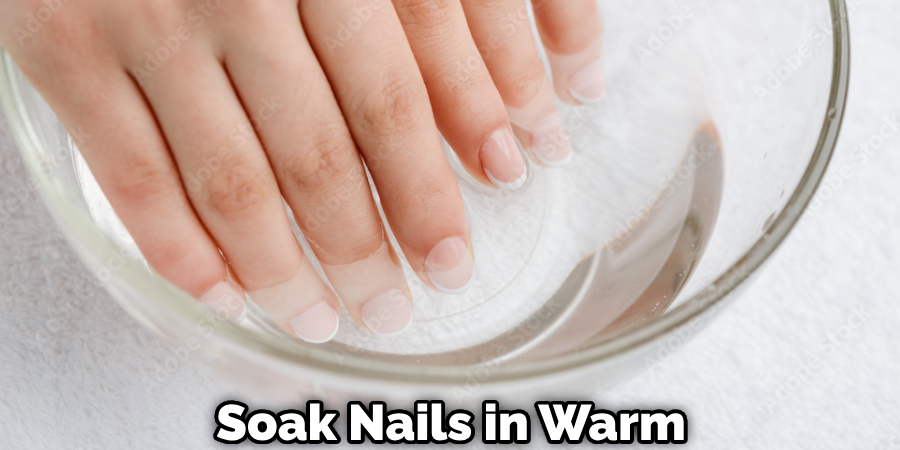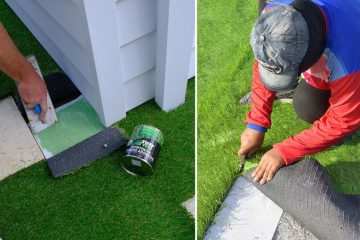When it comes to quick fixes and DIY projects, adhesives play a crucial role in our daily lives. Two popular options often in discussions are nail glue and super glue. While they may seem similar at first glance, these adhesives have distinct differences that make them suitable for different applications. In this comprehensive guide, we’ll delve deep into what’s the difference between nail glue and superglue, exploring their unique properties, uses, and potential risks.

Key Takeaways:
- Nail glue is for cosmetic use, super glue for general repairs
- Nail glue is gentler on skin, super glue bonds stronger
- Never use super glue on nails or skin
- Proper removal techniques differ for each adhesive
Understanding the Basics: Nail Glue vs. Super Glue
Nail Glue: The Cosmetic Companion
Nail glue is specifically formulated for use in the beauty industry, particularly for attaching artificial nails and repairing natural nails. Its unique composition is designed to be gentle on the skin while providing a strong bond for nail-related applications.
Key Features of Nail Glue:
- Primarily composed of ethyl cyanoacrylate
- Designed for safe use on natural nails and skin
- Typically comes with a brush applicator for precise application
- Dries in about 10-30 seconds
- Moderate to strong bonding strength
- Flexible when dry to accommodate nail movement
Super Glue: The Multi-Purpose Marvel
Super glue, also known as cyanoacrylate adhesive, is a general-purpose adhesive known for its incredibly strong bonding capabilities across a wide range of materials.
Key Features of Super Glue:
- Composed of methyl cyanoacrylate or ethyl cyanoacrylate
- Designed for bonding various materials like metal, plastic, and ceramics
- Usually comes in a tube with a precision tip
- Dries in 5-10 seconds
- Very strong bonding strength
- Rigid when dry

Chemical Composition: The Science Behind the Stick
While both nail glue and super glue belong to the cyanoacrylate family of adhesives, their specific compositions differ, leading to their unique properties and applications.
Nail Glue Composition
Nail glue typically contains:
- Ethyl cyanoacrylate (primary ingredient)
- Polymethyl methacrylate (for flexibility)
- Butyl acetate (solvent)
- Additional ingredients for nail health and safety
Super Glue Composition
Superglue usually consists of:
- Methyl cyanoacrylate or ethyl cyanoacrylate (primary ingredient)
- Stabilizers and thickeners
- No additional ingredients for skin safety
You Can Check It Out to Thin Super Glue.
Bonding Strength and Durability: Which Glue Holds Up?
When it comes to bonding strength, superglue generally takes the lead. Its industrial-strength formula creates a near-instantaneous bond that’s incredibly difficult to break. This makes it ideal for heavy-duty repairs and projects requiring a permanent fix.
Nail glue, while still providing a strong bond, is designed to be more flexible and less permanent. This is crucial for its intended use on nails, as it needs to accommodate the natural movement and growth of nails without causing damage.

Safety Considerations: Protecting Your Skin and Nails
When it comes to safety, nail glue has a clear advantage for cosmetic applications. It’s specifically formulated to be safe for use on skin and nails, with a lower risk of irritation or allergic reactions compared to superglue.
Safety Tips for Nail Glue:
- Always apply in a well-ventilated area
- Avoid contact with eyes and mouth
- Use sparingly to prevent overflow onto the skin
- Remove carefully with acetone-based nail polish remover
Safety Precautions for Super Glue:
- Never use on skin or nails
- Work in a well-ventilated area
- Wear protective gloves
- Keep away from eyes and mouth
- In case of skin bonding, use acetone or seek medical attention

Practical Applications: When to Use Which Glue
Nail Glue: Best For
- Attaching artificial nails
- Repairing natural nails
- Nail art and embellishments
- Temporary fabric repairs (in a pinch)
Super Glue: Ideal For
- Household repairs (ceramics, plastics, wood)
- Crafting projects
- Model building
- Quick fixes for non-porous materials
Removal Techniques: Getting Unstuck
Proper removal techniques are crucial for both nail glue and super glue to prevent damage to skin, nails, or bonded materials.
Removing Nail Glue
- Soak nails in warm, soapy water for 10-15 minutes
- Gently push artificial nails off or peel away dried glue
- Use acetone-based nail polish remover for stubborn residue
- Moisturize nails and surrounding skin after removal

Removing Super Glue
- For skin: Soak in warm, soapy water and gently peel apart
- For surfaces: Use acetone or a specialized adhesive remover
- For fabrics: Seek professional cleaning services
- Never force bonded skin apart; seek medical attention if necessary
Environmental Impact and Sustainability
As consumers become more environmentally conscious, it’s important to consider the ecological impact of these adhesives.
Nail Glue:
- Often comes in smaller quantities, reducing waste
- Some brands offer eco-friendly formulations
- Packaging may be recyclable (check local guidelines)

Super Glue:
- Typically comes in plastic tubes that may not be easily recyclable
- Some brands offer refillable options to reduce packaging waste
- Look for eco-friendly alternatives made from sustainable materials
Cost Comparison: Budget-Friendly Bonding
Both nail glue and superglue are relatively inexpensive adhesives, making them accessible to most consumers.
Nail Glue:
- Generally more expensive per ounce than superglue
- Specialized formulations may come at a premium
- Often sold in smaller quantities
Super Glue:
- Less expensive per ounce compared to nail glue
- Available in various sizes and multi-packs for better value
- Industrial-grade options may be pricier
Expert Tips for Optimal Results
To get the most out of your adhesive, whether it’s nail glue or super glue, follow these expert tips:
- Clean surfaces thoroughly before application for the strongest bond
- Apply in thin layers rather than thick globs for better adhesion
- Allow proper drying time before subjecting the bond to stress
- Store adhesives properly in a cool, dry place to extend shelf life
- Replace old adhesives regularly to ensure optimal performance

FAQs About What’s the Difference Between Nail Glue and Superglue
Can You Use Superglue as Nail Glue?
While super glue and nail glue are both cyanoacrylate-based adhesives, they are formulated differently and intended for different uses. Nail glue is specifically designed to be gentler on nails, minimizing damage and irritation, whereas super glue is a stronger, multi-purpose adhesive that can cause skin irritation, nail damage, and potential burns. Therefore, it is not advisable to use super glue as a substitute for nail glue. For safe and effective results, always use glue designed specifically for nails.
Is Nail Glue Stronger Than Super Glue?
Nail glue is not stronger than superglue. Super glue, composed of methyl cyanoacrylate, provides a stronger and more durable bond, making it suitable for heavy-duty applications and bonding a wide range of materials. On the other hand, nail glue, typically containing ethyl cyanoacrylate, is designed for cosmetic use, offering flexibility and safety for natural nails, but with a lower bonding strength compared to super glue. For nail-related tasks, nail glue is recommended, while super glue is better suited for general repairs and heavy-duty applications.
Can I Use Super Glue on a Broken Nail?
You can use super glue and a teabag to fix a broken nail. Cut a teabag to the size of the broken nail bed, apply a small drop of super glue, place the teabag on the nail bed, cover it with another drop of glue, let it dry, then buff the nail smooth and apply clear nail polish. However, it’s important to note that super glue is not intended for use on nails and contains harsh chemicals, so it’s better to use a nail glue specifically designed for this purpose.
What Can I Use in Place of Nail Glue?
When waiting for nail glue, you can consider using base gel, hard gel, or rubber base gel as substitutes, although they may not offer the same longevity and durability as nail glue. Other alternatives include double-sided tape, clear top coat polish, and pre-applied adhesive press-on nails. However, nail glue is generally the most effective option for long-lasting results, so it’s important to choose a substitute based on your specific needs and nail type while ensuring that you follow the application instructions carefully.
Conclusion: Choosing the Right Glue for Your Needs
While nail glue and superglue may seem similar at first glance, they each have unique properties that make them suitable for different applications. Nail glue is the go-to choice for cosmetic nail applications, offering a safe and flexible bond. Super glue, on the other hand, excels in general-purpose repairs and crafting projects where a strong, permanent bond is required.
By understanding the differences between these two adhesives, you can make informed decisions about which glue to use for your specific needs. Remember to always prioritize safety, follow proper application techniques, and consider the environmental impact of your choices.
Whether you’re fixing a broken nail or repairing a cherished keepsake, the right adhesive can make all the difference. Choose wisely, and may your bonds be strong and lasting!


